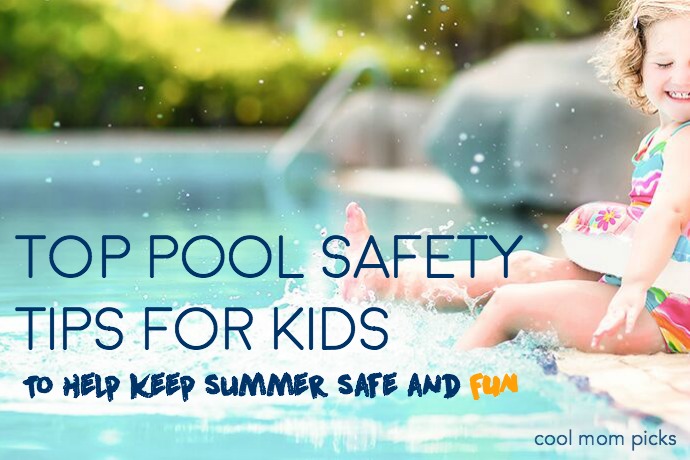We are always looking for products that help keep our kids safe at the pool, whether it’s a big community pool or something smaller in our friends’ backyards. Last year one of the coolest safety products we discovered was iSwimband, an excellent wearable drowning detection system that Jeana called a poolside essential for parents because it literally can saves lives. So we are beyond thrilled to welcome them as our newest sponsor. (Welcome!)
– Don’t miss an exclusive, limited time discount for CMP readers below –
This is not an alarmist thing for us in the least; pool safety is serious, serious business — iSwimband was in fact founded by a group of fathers after one of their children’s classmates was horribly injured in a pool accident. So we are really grateful to them for creating a product that adds an extra layer of safety and protection for our kids while they’re out having fun.
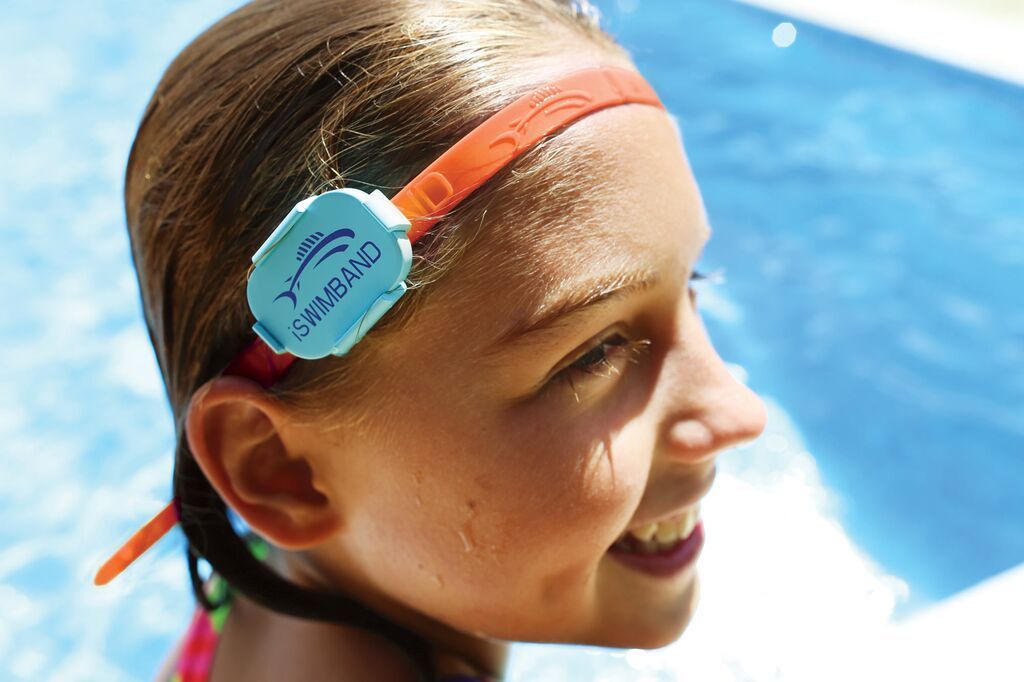
On their behalf, we’ve compiled some of our top tips for keeping kids safe at the pool. Whether you’ve got a pool membership, you’re hitting a summer home this season, you’re visiting a beachy resort, or you’re fortunate enough to have a pool in your own yard — as our kids would say, LUCKYYYYY! — we hope these help everyone have an extra-safe, extra-fun summer.
1. Vigilant supervision: The number one most important thing you can do.
Swim lessons, floatation devices and tech help aside, the most important pool safety tip is simply to pay attention. We know that’s hard as parents. And that obviously, watching a toddler (who should be at arm’s reach at all times in a pool) is more demanding than watching a teen. Even iSwimband is super clear that there’s no substitute for serious supervision.
That’s not just about you as a parent, or your caregivers either. Be sure you’re confident with the focus of the lifeguards at your public pools; if they seem distracted or like they’re more interested in flirting with the other lifeguards than watching the water, don’t hesitate to report it. We totally get that no one wants to be That Parent, but we’re talking about our kids’ safety here.
2. If you have a pool at home, secure it.
You want a minimum 4-foot high fence or other barrier with a gate that closes and latches by itself. Basically if your kids can’t accidentally (or not so accidentally) wander into the pool in your backyard, you’re way ahead of the game.
3. Make rules. Make kids repeat them back to you. A few times.
When we are doing anything with our kids where safety is a concern — jumping on a trampoline, visiting a theme park — we always set rules before we do anything else.
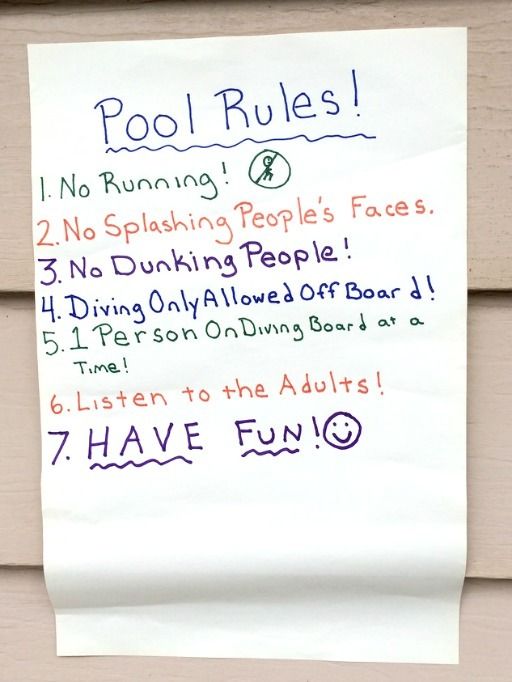
As far as pool safety, start with all those basic rules you’ve seen on pool signs your entire life: Don’t run. Don’t jump in the shallow end. Don’t run. Don’t push other kids. Then you can add your own based on the environment and ages and swimming skills of your kids: Don’t back dive unless you’re on a diving board. Don’t go in the pool unless an adult is with you. Don’t chew gum. Don’t take off the vest. And then there’s our grandmothers’ rule: Don’t swim for 30 minutes after eating.
Eh, that one’s up to you.
After we’ve told the rules to our kids, we make them repeat the list back to us. This way, it is abundantly clear that they know the rules, that those rules are important to us, and that we won’t hesitate to take you of the pool this instant missy if those rules are broken.
(And seriously, don’t run around the pool. People slip and fall all the time and it may not be as funny as it is on those home video shows. Though sometimes it is. But not always.)
4. Get the right floatation device for your child’s abilities.
If you have a non-swimmer, skip the inflatable arm swimmies or rafts and go right to a US Coast Guard approved life vest. Strap it properly and make sure it fits! Ever put a too-big vest on your kids? You can see it rise up over their shoulders in the water, which means their heads are more likely to go under.
If your kids can swim, it’s great to help build their confidence with other floatation devices while you supervise them, and allowing them increasing levels of independence. Just know that an inflatable tube and even a solid life vest is no substitute for keeping eyes on your kids.
5. Get some help from technology
There are lots of products designed to help keep kids safe these days, from perimeter alerts to pool alarms. They’re excellent for providing an added layer of confidence when it comes to pool safety. But one of the reasons we love the iSwimband in particular is that it can help track each individual child based on his or her own needs and abilities.
You attach the iSwimband sensor on its own headstrap or a kid’s pair of goggles, or if you have a non-swimmer, you can use a wristband that comes included.
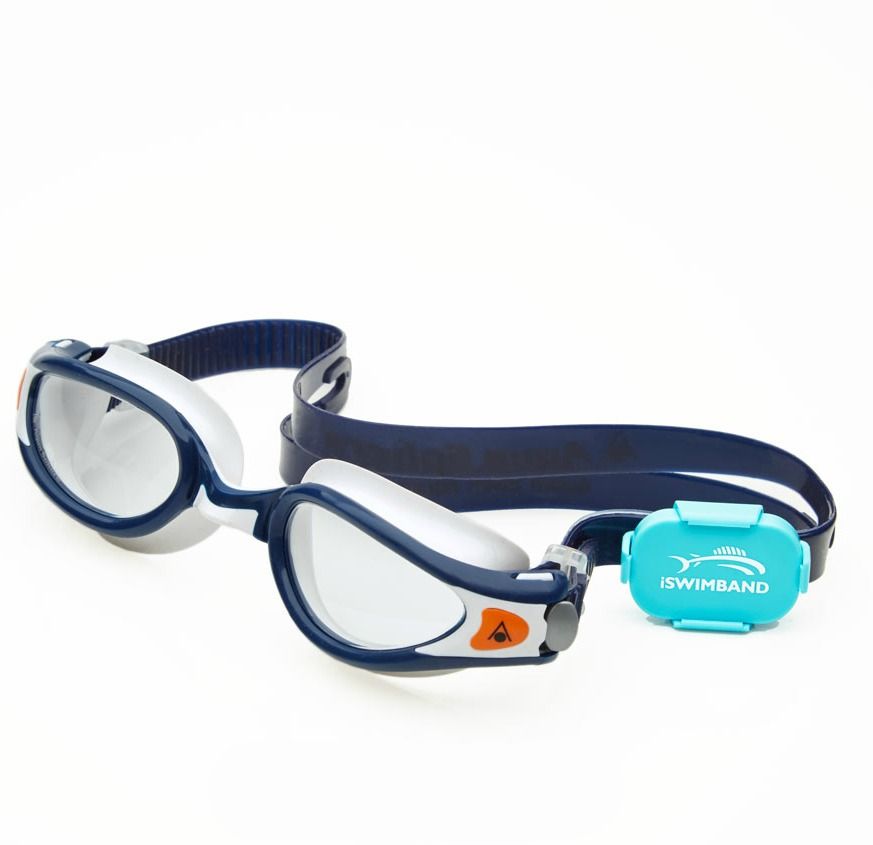
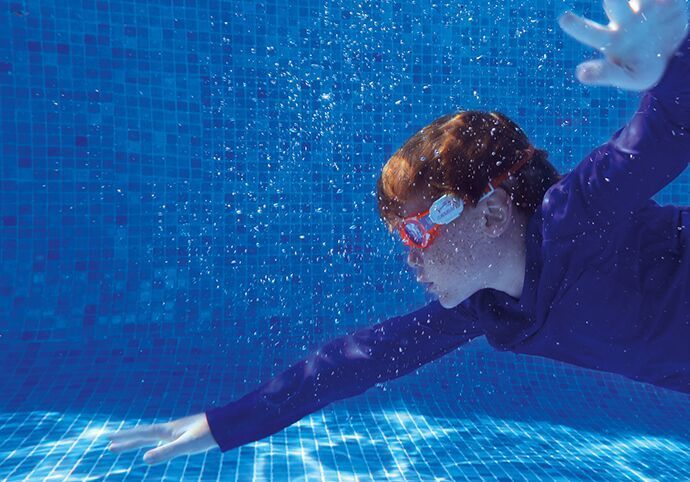
Using a Bluetooth connection — no WiFi necessary — the sensor detects when it’s submerged in water for a length of time you set, and immediately sends a loud WAKE THE NEIGHBORS level alert to your iOS or Android device and turns the entire screen bright red.
So basically if a young child ends up underwater for a mere 3 seconds because someone looked away for a moment (it happens), you’re on it. You can set it for longer periods of time for older kids who might be working on backflips or having an underwater tea party like we used to as kids.

And hey, you can even track up to eight kids at a time on the same app. So if you have a pool or a community pool membership, it’s not a bad idea to have an extra for visiting friends and cousins. Unless you already have eight kids of your own. In which case, we hope you have extra adults to help you, too!
Cool Mom Picks readers can save $10 off the iSwimband system using promo code CoolMom10
7. Stay close. Relatively.
With our young kids, even the stronger swimmers, we’ve always felt most comfortable when we’re no more than a dive in the water away from them. For older kids who don’t need you quite as close at all times, the iSwimband gives you up to a 100-foot Bluetooth range. That means that if you’ve got experienced tween swimmers in the pool, you can walk over to say hi to your friend who’s a few lounge chairs further back from the pool edge, without it stressing you out.
We like this aspect of the technology, for those of us who might be a little more helicopter-y than we care to admit.
(Okay, so we admit it. Sometimes we are.)
8. Don’t swim where you’re not supposed to swim
This seems like a duh, but we’ve seen kids get totally distracted when they’re having fun and end up deeper than they thought, in an adults-only part of the pool, or even in a designated lap lane in the pool. Also known as the “adults smacking our kids in the head accidently then yelling at us for it” lane.
9. Remember the buddy system? Do that.
If you have older kids who are great swimmers and don’t need to be watched over like a hawk, pair them so they can keep eyes on one another. It’s worked for camps and swim groups for years, and it should work for you too.
10. If a child is missing, check the water first.
Gah, we know that awful panicky feeling when, if even for a second, you don’t know where your kid is. So we really love this tip from the American Red Cross to always always look in the pool for a missing child first. Before the snack bar. Before the bathrooms. Seconds matter when it comes to drowning. Plus, it has the added benefit of putting your mind at ease, like, phew…he’s not in the pool. At which point you will probably find him at the snack bar after all, looking yearningly at the kids with ice pops.
11. Take an online course
It’s a good idea to brush up on CPR; Babycenter has a good illustrated guide. If you want to go a step further, you can find a class near you through the Red Cross website, or they’ve teamed up with the National Swimming Pool Foundation and created an entire online pool safety course for home pool owners that may give you even more peace of mind, and more tools to prevent emergencies — deal with them properly if they arise. Which we hope they never will.
Stay safe out there! And if you’re having a pool party this summer, feel free to invite us. We’ll respect all the rules and everything.

Thank you so much to our sponsor iSwimband, for keeping so many children safe and giving so many parents a little more peace of mind. Visit their website or Facebook page for more info.
EXTRA COOL: Cool Mom Picks readers can save $10 off the iSwimband system using promo code CoolMom10
pool rules photo: stevendepolo via cc
